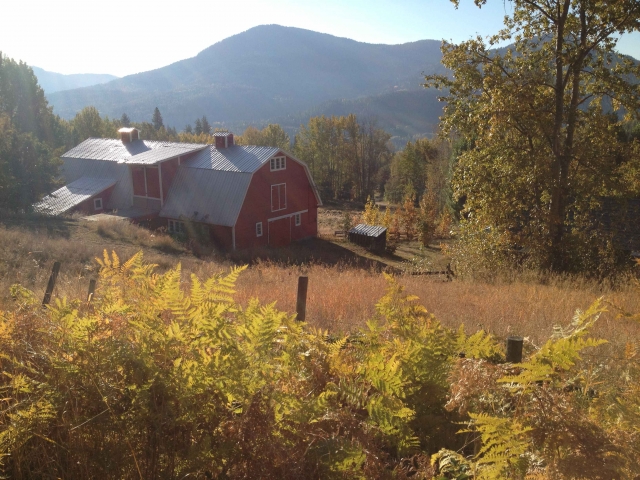COMMENT: Happy young farmers in Happy Valley will lease, not buy
Council was divided on whether or not to pursue Dr. Brenda Trenholme’s request for an OCP amendment to allow her to subdivide (reported here), so I would like to address Dr. Trenholme’s potentially most convincing argument, that smaller lots are more likely to attract young families interested in agriculture.
As a member of just such a “young family interested in agriculture,” and as one who has actively tested opportunities for years—including an informal land sharing arrangement for three seasons in Happy Valley—I feel I’m in a good position to address this idea.
Dr. Trenholme’s opinion is founded on a flawed assumption: that farmers need to own the land on which they work. On the contrary, especially in regions like ours, the price of land could quickly bankrupt farmers who operate on that paradigm—and it frequently does.
I briefly entertained the idea of trying to purchase land in Happy Valley. It’s so cute, (so there’s potential to attract “farm students”,) it’s so close to a friendly market of locavores, and it’s full of possibilities for creative farmers to crank out food. Even if big tractors might sink in Dr. Trenholme’s muck on portions of her land, what she sees as a “boggy” water problem, I see as a water opportunity on a warm, gentle slope begging for a multistorey food forest (i.e. an ecologically glorified orchard) with geese, ducks, chickens and other livestock working the understorey. I digress.
The point is, land prices here are way out of reach for anyone seriously interested in farming to earn a living. While speculation remains that someday, some council might allow for subdivision, that will ensure prices remain stratospheric. But there’s a simple solution that works for everyone: leases.
The future of farming in Happy Valley will be leases signed to farmers by wealthy land owners. There is enormous flexibility in how farmers and landowners can negotiate leases to find a mutually beneficial middle ground.
The lease goes on title for the term of the agreement, giving the farmer security in improvements she might make. In return, the landowner gets the benefit of farm status (reduced taxes) and possibly a rental income as well, perhaps negotiated as a trade for farm products.
The same is true for urban farmers. The “SPIN” (Small Plot INtensive) approach is taking off across the continent as urban market gardeners trade produce for lawn space in the yards they convert to food gardens. They’re turning a profit, increasing the city’s local food supply, and connecting people to their land and each other in one fell swoop.
Both rural farmers with leases on the city’s fringe and urban SPIN farmers in the core are needed to produce the vegetables, meat, eggs, and dairy needed in the long term for town dwellers. Naysayers and Eeyores aside, it’s quite possible in this climate and on this land to produce all these items and more, both ecologically and economically.
Especially for farmers with rural leases, it will be much, much easier for them to make a living with only one or two leases to sign, not a whole whack of arrangements for little bits of this parcel and that lot, with all the added difficulties of transport across fragmented operations.
Two or three acres is hardly enough for a farmer to make a living in livestock, even if “stacked” with as many diverse ventures as can be stuffed into that space. Five acres is still hardly enough, especially if you want to compare incomes with owners of other kinds of businesses. (And why shouldn’t farmers earn as much as other businesses?)
The truth is, when a serious farmer gets serious about Happy Valley, they will likely tack together more than one lease as they expand their operation. But why should we make it any more challenging for her—when she comes along—by forcing her from the get-go to negotiate with multiple landowners for little postage stamp lots broken up with homes, lawns, septic fields, driveways, and personal considerations at every turn?
No doubt Dr. Trenholme prefers the idea of subdividing, so she can sell her 5200 square foot home, swimming pool, detached suite, and barn, for something less than the $1.3 million she’s currently asking, and still have 5 acres left to play with.
I agree with Coun. Kathy Wallace, however. Dr. Trenholme has options. Among those options are to sell the entire property for a lower value. Many home owners are being forced to lower their expectations in this decidedly depressed housing market.
Another option, either for her or the next owner—and an option I hope every non-farming Happy Valley owner sees fit to pursue—is to advertise their land for lease, and see what kind of young, happy farmers come by to make the land productive again.


























